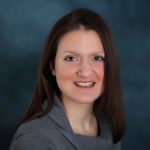Dr. Sarah LoBisco, ND
@DrLoBisco
The Naturopathic Medicine Path- More Than Just Medicine
When I first graduated with my degree in Naturopathic Medicine, I knew it would not be an easy road to trudge down. Just ten short years ago, my follow colleagues and I were well aware that we had more than one purpose ahead of us, beyond the obvious one of assisting with making our patients thrive. Many of us knew, like it or not, as naturopathic doctors we would brush up against politics, especially in regards to recognition and licensing.1,2 Furthermore, we would become more and more prepared for the educational opportunity that arose with the question that followed a query of our career, “What’s that?”
As we built our practices and reemerged into our communities, we learned we were important members of the “21st century physicians.”3We would become “teachers” in a new philosophy of medicine and patient-centered care. Just as treating the individual in front of us was a time to educate, we would also be educating the public on the value of natural therapeutics, treating the cause of disease, using the least invasive means first to avoid harm, treating the whole person, and the importance of prevention.2-3 As the University of Bridgeport College of Naturopathic Medicine states:
The University of Bridgeport College of Naturopathic Medicine is committed to training physicians for the 21st century: doctors who are leaders in the emerging paradigm of healthcare, blending research and innovative technologies with the art of healing and natural therapeutics to provide patient-centered care.
…
Steeped in traditional healing practices, naturopathic medicine emphasizes holistic, preventive care. By focusing on prevention, optimal health and wellness, and diet and lifestyle as first-line interventions, naturopathic physicians educate and empower patients to take responsibility for their health.3
Many of the challenges naturopathic physicians face as modern pioneers aren’t necessarily unique to our profession. With the release of the Flexner Report in 1910, many “nonconforming” medical professionals were suppressed thereafter. The Flexner Report set forth to standardize medical education and focus solely on the science of evidence-based practices.4-8
According to a 2010 article in the Journal of Chiropractic Education:
Barzansky and Gevitz summarize the seven major recommendations that Flexner included in his report2:
To reduce the number of poorly trained physicians;
To reduce the number of medical schools from 155 to 31 (by the time the report was published schools had already decreased to 131);
To increase the prerequisites to enter medical training;
To train physicians to practice in a scientific manner;
To engage the faculty in research;
To have medical schools control clinical instruction in hospitals; and
To strengthen state regulation of medical licensure.4
Although many deem the report as a major breakthrough in the quality of education of physicians,7-8 the streamlining of one viewpoint as the only acceptable version of medicine decreased the value of traditional knowledge and the wisdom gained from experience. The reductionist model became prominent with the study of disease and organ systems, dwindling the importance of holistic approaches. However, the reemergence has begun.
Today, due to shortcomings of our present healthcare system and its failure to provide impressive benefits over risks, the need for additional viewpoints and methods is blatantly obvious. (You can read about the insanity of some of our current methods here and the pitfalls of only using strict evidence-based medicine to assess natural methods here.)
A recent survey by the Center for Disease Control and Prevention (CDC) estimated at least 30% of the 88,692 adult population sampled used CAM (complementary and alternative medicine). There were some changes in the wording between previous years of the survey which may account for variations in estimates from the years, but the trend has stayed relatively steady. The questions of the current survey were based on the use of Ayurveda, biofeedback, chelation therapy, chiropractic care, energy healing therapy, special diets, folk medicine or traditional healers, guided imagery, homeopathic treatment, hypnosis, naturopathy, nonvitamin, nonmineral dietary supplements, massage, meditation, progressive relaxation, qi gong, tai chi, or yoga. Interestingly, there was a “small but significant linear increase in the use of homeopathic treatment, acupuncture, and naturopathy.”9
The “Either/Or” Stomp Out
“Naturopathy”, similar to “functional medicine”, has become “buzz words” for a new form of primary care medicine, one that can offer solutions not found in a healthcare system that only embraces one viewpoint. They both focus on prevention, and each, though not mutually exclusive, has its own model of individualizing medicine with a holistic and patient-centered approach.10-13
Still, naturopathic medicine continues to have its growing pains regarding fitting in and being embraced within the current model of healthcare. Our training is unique in that it is based on a holistic philosophy that effectively combines our “roots of vitalism” and “nature cure” with an equal respect of the use of various forms of medicine, including the standardization and effective use of conventional treatment.1-3, 10-16
Similarly to what was laid out for the foundation of conventional medicine, the belief that our profession should have standardization in order to effectively practice has allowed for licensing of naturopathic physicians. How to effectively manage and treat our patients within our naturopathic standard is set forth by our accrediting AANMC’s Professional Competency Profile.15 As naturopathic medicine becomes more embraced, the power of its non-dualistic viewpoint that falls in love with the patient over the approach will continue to become popularized.
Furthermore, our profession is among the ones that believe that evidence-based medicine isn’t the final say of efficacy.1-3, 10-16However, it will not prevent the use of this model as a way to increase understanding and validate the rationales of lifestyle, integrative, and natural treatments.16-20
For example, the critique of the use of one of our modalities, “detoxifying,” can be justified when not applied therapeutically. I wrote about that here. However, if one understands the concept within a context of proper treatment which uses appropriate assessment and validated, safe interventions, results can be promising.18-30 In one pilot study, the results of a 7-day detox program state, “A statistically significant (47%) reduction in the Metabolic Screening Questionnaire scores resulted. This improvement in patient-assessed health occurred concurrently with a 23% increase in liver detoxification capacity, as reflected by the caffeine clearance measure. There was an increase in the urinary sulfate-to-creatinine ratio after treatment, indicating a trend toward improved liver function.”18
Furthermore, it is well known that foods can modulate various detoxification pathways.19 This means a “detox diet” prescribed by a naturopathic doctor schooled in nutritional therapeutics could help to alleviate the detrimental consequences of living in a chemical soup world.
Naturopathic Medicine Week
The week of October 10, 2016 is Naturopathic Medicine Week. Resolutions passed by the US Senate, and a number of State proclamations have officially recognized the ability of naturopathic physicians to “provide safe, effective, and affordable health care.” We were touted to play an essential role in addressing the nation’s pressing shortage of primary care physicians.
For more evidence of naturopathic medicine’s efficacy, you can skim through the abstracts of several studies on cost effectiveness of natural modalities and clinical and physician descriptive here.20 You can also read my previous blog on the efficacy of lifestyle medicine here.
Join us in celebrating by spreading the word of what naturopathic medicine and sharing your favorite posts on Natural Path. We can make a difference in healthcare from moving from sick, fragmented care to integrated, holistic care, one person at a time.
For more evidence of naturopathic medicine’s efficacy, you can skim through the abstracts of several studies on cost effectiveness of natural modalities and clinical and physician descriptive here.20 You can also read my previous blog on the efficacy of lifestyle medicine here.
 Sarah Lobisco, ND, is a graduate of the University of Bridgeport’s College of Naturopathic Medicine (UBCNM). She is licensed in Vermont as a naturopathic doctor and holds a Bachelor of Psychology from State University of New York at Geneseo. Dr. LoBisco speaks professionally on integrative medical topics, has several journal publications, and has completed her postdoctoral training as a certified functional medicine practitioner. Dr. LoBisco currently incorporates her training in holistic medical practices and conventional medicine through writing, researching, private wellness consultations, and through her independent contracting work for companies regarding supplements, nutraceuticals, essential oils, and medical foods. Dr. LoBisco also enjoys continuing to educate and empower her readers through her blogs and social media. Her recent blogs about living naturally in our complex world and on the applications of essential oils can be found at www.dr-lobisco.com and at www.saratoga.com/living-well. Her new book BreakFree Medicine is now available on Amazon and Barnes & Noble’s. More information can be found at http://dr-lobisco.com/dr-sarah-lobisco-breakfree-medicine/
Sarah Lobisco, ND, is a graduate of the University of Bridgeport’s College of Naturopathic Medicine (UBCNM). She is licensed in Vermont as a naturopathic doctor and holds a Bachelor of Psychology from State University of New York at Geneseo. Dr. LoBisco speaks professionally on integrative medical topics, has several journal publications, and has completed her postdoctoral training as a certified functional medicine practitioner. Dr. LoBisco currently incorporates her training in holistic medical practices and conventional medicine through writing, researching, private wellness consultations, and through her independent contracting work for companies regarding supplements, nutraceuticals, essential oils, and medical foods. Dr. LoBisco also enjoys continuing to educate and empower her readers through her blogs and social media. Her recent blogs about living naturally in our complex world and on the applications of essential oils can be found at www.dr-lobisco.com and at www.saratoga.com/living-well. Her new book BreakFree Medicine is now available on Amazon and Barnes & Noble’s. More information can be found at http://dr-lobisco.com/dr-sarah-lobisco-breakfree-medicine/
References:
- American Association of Naturopathic Physicians. Licensed States & Licensing Authorities. AANP Web Site. 2016. Available at: http://www.naturopathic.org/content.asp?contentid=57
- American Association of Naturopathic Physicians. Definition of Naturopathic Medicine. AANP Web Site. 2016. Available at: http://www.naturopathic.org/content.asp?contentid=59
- University of Bridgeport College of Naturopathic Medicine. Naturopathic Medicine (N.D.) Degree Program: The 21st Century Physician. UBCNM Web Site. Available at: http://www.bridgeport.edu/academics/graduate/naturopathic-medicine-nd/
- Johnson C, Green B. 100 Years After the Flexner Report: Reflections on Its Influence on Chiropractic Education. The Journal of Chiropractic Education. 2010;24(2):145-152.
- Stahnisch FW, Verhoef M The Flexner Report of 1910 and Its Impact on Complementary and Alternative Medicine and Psychiatry in North America in the 20th Century.Evidence-Based Complementary and Alternative Medicine. 2012; 2012: Article ID 647896. doi:10.1155/2012/647896.
- Beck AH. The Flexner report and the standardization of American medical education. JAMA. 2004;291(17):2139–40. Available at: http://sci-hub.bz/10.1001/jama.291.17.2139.
- Varughese H, Shin P. The Flexner Report: Commemoration and Reconsideration. The Yale Journal of Biology and Medicine. 2010;83(3):149-150.
- Ludmere KM. Commentary: Understanding the Flexner Report. Acad Med. 2010 Feb;85(2):193-6. doi: 10.1097/ACM.0b013e3181c8f1e7. Available at: http://sci-hub.bz/10.1097/ACM.0b013e3181c8f1e7
- Center for Disease Control and Prevention (CDC). National Health Statistics Reports from the National Health Interview Survey. No. 79. Trends in the Use of Complementary Health Approaches Among Adults: United States, 2002–2012 . 16 pp. (PHS) 2015-1250. February 10, 2015. Available at: http://www.cdc.gov/nchs/nhis/nhis_nhsr.htm
- Koithan M, Sutherland E. Naturopathic Treatment of Obesity. The journal for nurse practitioners : JNP. 2009;5(9):693-694. doi:10.1016/j.nurpra.2009.07.019.
- Fleming SA, Gutknecht NC. Naturopathy and the Primary Care Practice. Primary care. 2010;37(1):119-136. doi:10.1016/j.pop.2009.09.002.
- Weeks J. Tipping Point? Cleveland Clinic Announces Partnership With Hyman/Hanaway and the Institute for Functional Medicine … plus more. Integrative Medicine: A Clinician’s Journal. 2014;13(6):12-15.
- Gustafson C. Jeffrey Bland, phd, and Patrick Hanaway, md: Taking the Omics Revolution to the Street. Integrative Medicine: A Clinician’s Journal. 2015;14(1):20-23.
- Wardle JL, Adams J, Lui C-W, Steel AE. Current challenges and future directions for naturopathic medicine in Australia: a qualitative examination of perceptions and experiences from grassroots practice. BMC Complementary and Alternative Medicine. 2013;13:15. doi:10.1186/1472-6882-13-15.
- Association of Accredited Naturopathic Medical Colleges. AANMC’s Professional Competency Profile. AANMC Web Site. Available at: http://www.naturopathic.org/Files/About_Naturopathic_Medicine/AANMC Competency Profile 3-31-08.pdf
- Jagtenberg T, Evans S, Grant A, Howden I, Lewis M, Singer J. Evidence-based medicine and naturopathy. J Altern Complement Med. 2006 Apr;12(3):323-8. Available at: http://sci-hub.bz/10.1089/acm.2006.12.323
- Seely D, Szczurko O, Cooley K, et al. Naturopathic medicine for the prevention of cardiovascular disease: a randomized clinical trial. CMAJ : Canadian Medical Association Journal. 2013;185(9):E409-E416. doi:10.1503/cmaj.120567.
- MacIntosh A, Ball K. The effects of a short program of detoxification in disease-free individuals.Altern Ther Health Med. 2000 Jul;6(4):70-6.
- Hodges RE, Minich DM. Modulation of Metabolic Detoxification Pathways Using Foods and Food-Derived Components: A Scientific Review with Clinical Application. Journal of Nutrition and Metabolism. 2015;2015:760689. doi:10.1155/2015/760689.
- Naturopathic Physician’s Research Institute. NPRI Web Site. Available at: http://www.nprinstitute.org/naturopathic-medical-research.html
















